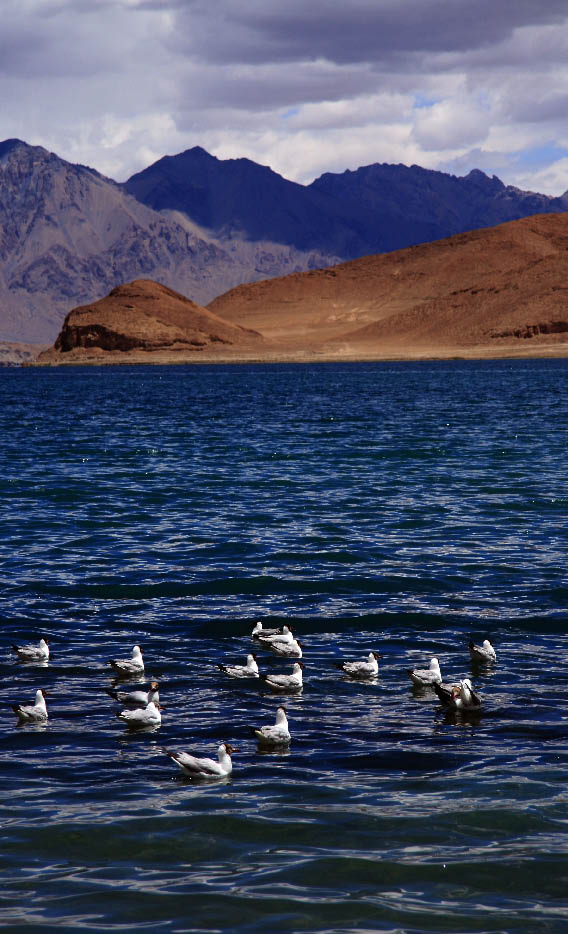| Geographic and Social Frontiers: Southwest Tibet
By WANG YING
THERE are four counties in Tibet made special by their borderland locations; each has a distinctive natural geography, scenic richness and cultural pluralism. Yadong, Burang, Zanda and Rutog are four frontier counties in southwest Tibet neighboring Nepal and India, each deserving a close look.
Yadong's Agreeable Climate
Located at the southern foot of the middle part of the Himalayas, Yadong County features a very agreeable climate and abundant water resources.
The northern and southern Yadong, with the boundary marked by Phari Town, have formed a completely different landscape and climate because the average altitude of the northern part is above 4,300 meters while that of the southern part is only about 2,800 meters. Driving from Xigaze south towards Yadong in July, yellow fields of blossoming rape crops greet you along roads peppered with red-walled and golden-roofed temples. Words fail the splendid scenery here.
Yadong is renowned for its hotsprings. The most famous one, the Kambu, lies in a narrow valley in Upper Kambu Village of Kambu Town, which can be reached via the Kangmar-Yadong Highway. The hotsprings cover a vast area with various pools of different temperatures spread across the east mountain slope of the valley. It is said that the hotspring therapy here is very much a part of effective medical care for various diseases. Technically Yadong County is eight times larger than urban Lhasa, covering an area of 4,306 square kilometers, while its population of 12,000 is less than one-tenth that of urban Lhasa. So walking the byroads of this peaceful county, it is more likely you'll come across an animal than a person or a village… not to mention a restaurant.
On the way to Kambu Hot Spring what accompanied me were the lush mountains, the rushing, continual murmer of the river and the gentle nods of blossoming wild roses. Occasionally I would run into a village in deep mountains and take a long appreciative look at their distinctive Tibetan architectural style. Woodpiles stood by the doorway of every household and crops were planted around the dwellings. It was not hard for me to imagine the sense of plenty that characterized the lives of villagers.
The Nathu La Pass in Yadong County is another draw for visitors. It marks the China-India border and in 2006 a frontier trade market was established there. It is said that the busiest day of the week is Saturday when many well-dressed Indian aristocrats would come to shop.
About 13 kilometers away from the county seat is the Dungkar Monastery, built in the early 16th century. It is the largest and the most influential Gelukpa monastery in Yadong County. From 1950 to 1951 the Dalai Lama stayed here, and this spot is where General Zhang Jingwu, a delegate of the central government, presented him with a personal letter from Chairman Mao Zedong and a duplicate of the agreement for the peaceful liberation of Tibet. A stele that marked the meeting was established in front of the monastery and stands there today.
Trade Frontier of Burang
 |
| There are more than ten bird islands of different species scattered on the charming Pangong Lake. |
| 